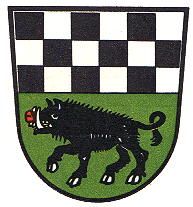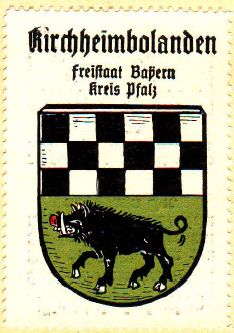Kirchheimbolanden: Difference between revisions
Knorrepoes (talk | contribs) No edit summary |
Knorrepoes (talk | contribs) m (Text replace - "|width="15%"|50 px|right |}" to "|width="15%"|50 px|right |}<seo title="Wappen, Gemeindewappen" />") |
||
| Line 3: | Line 3: | ||
|width="70%" align="center" |'''Heraldry of the World<br/>Civic heraldry of [[Germany]] - [[Deutsche Wappen|Deutsche Wappen (Gemeindewappen/Kreiswappen)]]''' | |width="70%" align="center" |'''Heraldry of the World<br/>Civic heraldry of [[Germany]] - [[Deutsche Wappen|Deutsche Wappen (Gemeindewappen/Kreiswappen)]]''' | ||
|width="15%"|[[File:Germany.jpg|50 px|right]] | |width="15%"|[[File:Germany.jpg|50 px|right]] | ||
|} | |}<seo title="Wappen, Gemeindewappen" /> | ||
Revision as of 17:42, 5 November 2012
| Heraldry of the World Civic heraldry of Germany - Deutsche Wappen (Gemeindewappen/Kreiswappen) |
KIRCHHEIMBOLANDEN
State : Rheinland-Pfalz
District (Kreis) : Donnersbergkreis
Verbandsgemeinde : Verbandsgemeinde Kirchheimbolanden
Official blazon
Origin/meaning
The arms are a combination of the arms of the counts of Sponheim (upper part) and the counts of Eberstein (lower part).
The counts of Sponheim owned the town in the 13th century and forced Emperor Charles IV in 1368 to grant Kirchheimbolanden city rights. The family ruled the town until 1393. The colours of the field are yellow and blue, the present colours are thus historically wrong.
The counts of Eberstein founded the castle Stauf in the town, which was later owned by the Von Sponheims. The boar is a canting symbol (Eber=boar).
The arms are derived from the seals of the town. All seals, dating from the 14th, 16th and 18th centuries show the chequered field with the boar. The arms were first granted in 1844 and on the arms a single helmet (without crest) was placed. This was based on a drawing from 1732, but are not in use now.
| The arms in the Kaffee Hag albums +/- 1925 |
Literature : Stadler, K. : Deutsche Wappen - Bundesrepublik Deutschland. Angelsachsen Verlag, 1964-1971, 8 volumes.


